Spring Field Semester 2023
Spring Field Semester 2023
Week 14 (Two perspectives) - Spring Field Semester 2023
by Joe Slade
Week fourteen (April 17-20) is upon us. This is the last week of class for the 2023 spring field semester. It seems as if only yesterday we were starting the semester. The old adage has been proven true that time flies when you’re having fun because, this semester has flown by quicker than a New York minute. This week was the second week of wildlife assessment where the class delved deeper into various forms of wildlife and their management. The course had 4 instructors. Dr. Cox was the chief instructor overseeing the overall structure of the class. The other three professors were Dr. Springer (mammals), Dr. Price (herptiles) and Dr. McNeil (avians).
On Monday, the class went to Griffith Woods Wildlife Management Area (WMA) with Dr. Springer. This WMA is located in Harrison County. The reason for coming here was to assist in data collection for a research project monitoring the effects of wildlife browse on tree regeneration. While here, the students came upon the fabled briar patch made up of blackberry bushes and multi floral rose. It has been said that once one stumbles upon such a patch that within one will truly discover whether or not they wish to walk the path of a forester.
On Tuesday, the students met with Dr. Price for an introduction to herptiles. From there the class went to Berea to check tin traps for specimens. Students had a great time. On Wednesday, students met with Dr. Cox on a farm in Garrard County. Here the class looked for wildlife indicators and discussed woody species as well as invasive species and their management. Thursday, students met with Dr. McNeil at the same farm in Garrard County. Students captured birds with mist nets and were instructed on how to band them.
The data collected helped students have a greater understanding of what species occupy various forest cover types. The things learned this week are crucial tools in the toolbox of the students. This knowledge can be used to have a greater understanding of wildlife’s interaction with the environment and use this knowledge to help a landowner meet their management objectives.
by Josh Kennedy
Week 14 of the spring field semester took place from 4/17 to 4/20. The students traveled to various places in Kentucky discussing different wildlife management strategies, objectives, and impacts.
On Monday 4/17, the students traveled to Griffith Woods Wildlife Management Area (WMA) with Dr. Springer. The goal was to measure herbivory impacts on reforestation efforts. In 2011, more than 6,600 trees were planted on the WMA. This year’s field semester class took height and herbivory data to measure the impacts on the Bluegrass region’s forests. On Tuesday, the class traveled to Berea Forest. Dr. Price introduced the class to herpetology identification and survey methods. Wednesday was spent with Dr. Cox at a farm in Garrard County. This trip simulated working with a landowner, and the class was tasked with writing a management plan to meet landowner objectives, which mainly centered around wildlife. In addition, students learned about different wildlife signs, and how to identify certain tracks and scat. On Thursday, 4/20, the class went back to the farm in Garrard County with Dr. McNeil. The students set up mist nets to capture birds, to get a sense of occupancy and how different species prefer different forest covers.
The activities this week gave students the necessary tools on how to properly manage land for a variety of purposes. Wildlife is a realistic management goal for many landowners and agencies. Knowing how to properly identify and implement the required strategies is a task many foresters will have to undertake.
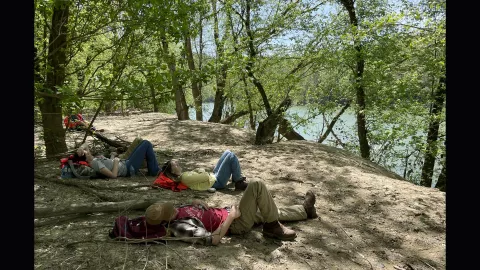
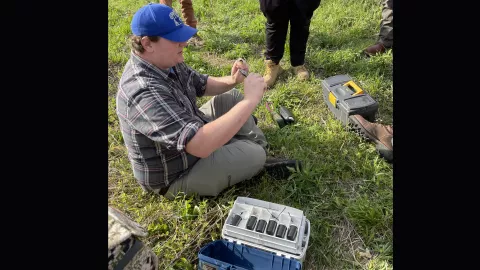
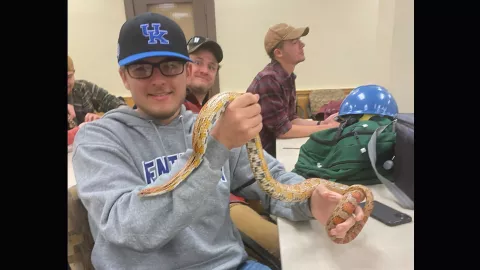
Week 13 - Spring Field Semester 2023
by Andrew Buckwalter
This week, we spent our time with Dr. Jeff Stringer to get more acquainted with the nitty-gritty details of the logging industry. We visited multiple locations around western Kentucky to better understand the process and those involved. This included landowners, loggers, mechanics, Kentucky Division of Forestry (KDF), and mill owners, all of whom make buying, selling, and creating proper land management possible. We witnessed the felling of trees, heavy machinery used to cut them, log hauling, and skidding. This week was essential because it showed us the other side of forestry that the public often ignores. The logging industry is crucial, but it has a bad reputation due to lack of understanding. By experiencing a log yard or logging operation in real-time, we were able to observe what actually takes place. This experience also helped steer my career in a specific direction. If I were interested in protecting logged land, getting involved with the Kentucky Division of Forestry would be a good start. Talking to both landowners and loggers also helped shed light on how many steps both buyer and seller must take to secure profit and create a desired habitat. The exposure to various perspectives helped me realize the importance of collaboration between different stakeholders to achieve sustainable forestry practices. Moreover, it highlighted the need to balance economic, social, and environmental considerations when managing forests.

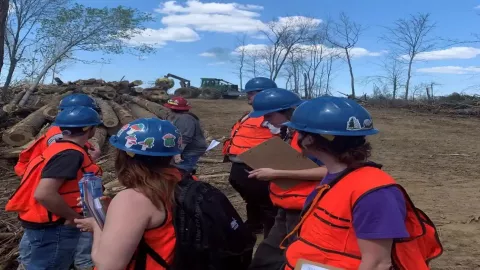
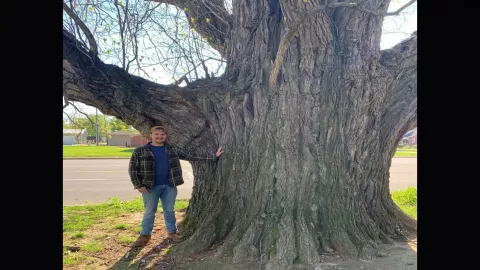
Week 12 - Spring Field Semester 2023
by Sarah Cawood
The final week at Robinson Forest was the week of April 3rd, 2023. We examined soils, water quality and hydrology, tallied herptiles in the creek near camp, and conducted a habitat assessment for high gradient streams.
Dr. Amanda Gumbert took us to three soil pits on Monday, April 3rd where we assessed soil horizons, textures, colors, structure, and moisture consistency. On Tuesday, April 4th, Dr. Kenton Sena took us to Falling Rock, Clemons Fork, Buckhorn, and Troublesome to do an assessment on stream quantity and quality in and near Robinson Forest. Ms. Jill Newman took us to Little Mill Seat to find salamanders and other aquatic species in the creek on our last day, Wednesday, April 5th.
All these activities are important because we can assess what effects weathering, land management, land use, and which locations do best overall with or without disturbance. It is important in our field to know more than just trees. By studying the whole ecosystem and how one component affects another, we can get a better grasp on what is going on behind the scenes and not just what is there on the surface. As natural resource professionals we need to monitor soils, water, and wildlife. Knowing each part and building on previous knowledge will be crucial when giving advice to a landowner or a homeowner who may have one or more of these elements on their property. It helps us have a deeper understanding of the whole picture.
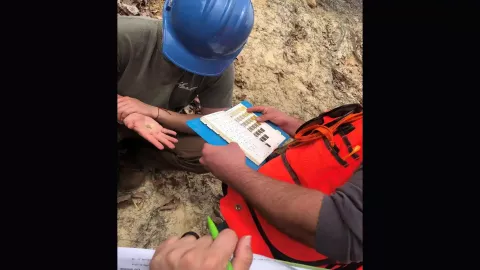

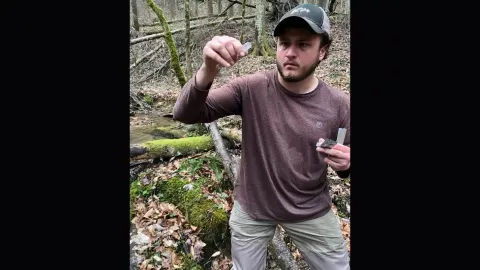
Week 11 - Spring Field Semester 2023
by Sam Davis
This week was the first part of the Wildlife Assessment course lead by Dr. Matt Springer and Dr. John Cox. On Monday, we met at the Thomas Poe Cooper Building with Dr. John Cox for a brief lecture on syllabus. Tuesday was the first day in Robinson Forest. Dr. Matt Springer took the students on a tour of several sites within Paul Van Booven Wildlife Management Area (WMA). While visiting a pine stand on an old mine site, the class was tasked with creating a wildlife management plan focused on establishing suitable deer habit. Those visits gave students a visual representation forest management with a focus on creating wildlife habit.
That evening, students broke into groups and were given a regeneration assignment to design an experiment measuring the impact of deer browse on forest regeneration to be presented Wednesday morning. After presentations, the students returned to Van Booven WMA to enact their wildlife management plan created on Tuesday. The groups took three 10BAF prism plots and marked the leave trees. The students than had the opportunity to enact Tuesday’s plan by felling trees under the direct supervision of Dr. Matt Springer and David Collette.
On Thursday, the forestry students left Robinson Forest and headed to Yatesville Lake WMA to meet with guest speaker John Frazier, a forester with Kentucky Fish and Wildlife. John took the students on a tour of several wildlife management clearcuts. Those demonstrations were examples of using forestry to find a balance between timber management and wildlife management. Friday was for the students to finish assignments.
The main focus of this week was to engage forestry students in activities focused on approaching forest management in the context of wildlife management. As professionals, we will use this knowledge to include wildlife in our management plans.

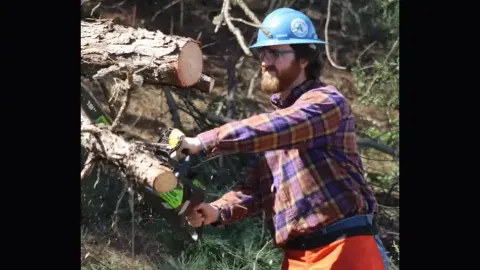
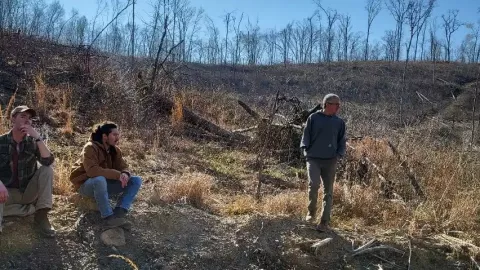
Week 10 (Two perspectives) - Spring Field Semester 2023
by Jason Brown
We began week eleven at Robinson Forest with Dr. Muller. The week took place from March 20th to March 24th. On Monday afternoon Dr. Muller briefed us in the classroom and assigned plots to each of our groups. Our primary goal was to conduct a timber inventory (also known as a timber cruise) of the approximately eighty-acre watershed of Boardinghouse branch. The cruise was conducted primarily on Tuesday and Wednesday, and on Thursday we aggregated our collected data to do an analysis of the Boardinghouse watershed. The objective was to determine the composition of the overstory and the stocking levels of the overstory of the watershed.
The skills we practiced during the inventory are foundational to the forestry profession, as these skills allow us to make informed decisions regarding forest management strategies. These skills include taking tree diameters, merchantable height, and measuring stem density based on basal area, which is a measure of cross-sectional coverage in area of trees. Additionally, after the cruise was completed, we practiced data analysis skills in Microsoft Excel as each group copied their collected data into Excel for analysis. By taking a timber inventory, we can determine the conditions of a stand from several perspectives, including forest health, stand maturity, and potential management options. As professionals, we will use these skills regularly in multiple capacities, especially regarding silvicultural prescriptions, and for timber sales.
by Austin Fields
This week, the University of Kentucky forestry program’s junior class was taught by Dr. Jacob Muller. The Boardinghouse watershed in Robinson Forest is where all of the week’s activities were centered. On Monday, students split into their groups for the week and took 1/300th acre regeneration plots along various aspects to get a feel for changes in species composition and stand structure. On Tuesday and Wednesday, the groups separated and each collected information on nineteen plots using point sampling. Students were given GPS units and coordinates for some of their assigned plots. To find the others, they were expected to navigate using their compass and maps. At each plot, groups collected information such as species, diameter at breast height merchantable tree height, tree grade and cull, percentage of light availability, and deer browse activity. Thursday and Friday were spent working through the data to produce a summarized report of our findings. This report attached dollar values to trees using fiscal year 2022 delivered log prices and gave the landowner (University of Kentucky) a good idea of the value of timber on the watershed. Taking variable and fixed-radius plots and collecting/processing tree data are foundational skills that are required of foresters. In many cases, forestry work involves cruising sections of land and taking enough information to provide an accurate snapshot to the landowner of what their forest looks like, and what their options for management are. This hands-on experience has given students confidence for their future careers.
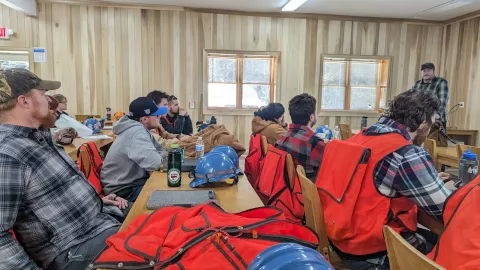
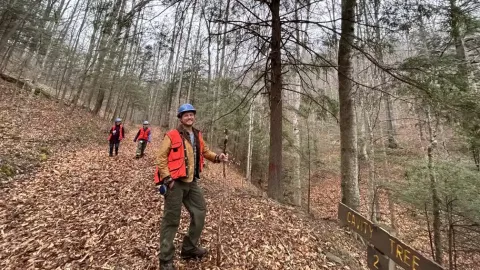
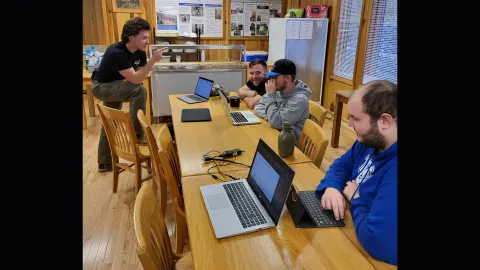
Week 9 - Spring Field Semester 2023
by Vincent Morrison
Dr. Stringer was our main instructor for this week. On Monday, we were unable to make it to Robinson Forest due to a lack of power, so we spent the day in TPC being instructed on the curriculum of the Master Logger Program. On Tuesday, the class traveled to a tree nursery to get hands on experience with the process of growing saplings from seed and sending them across the region to landowners and government agencies. We were given a tour of the facility, a brief lecture on plant physiology by Dr. Stringer, and an opportunity to hand plant saplings with specialized tools. On Wednesday, we were visited by the team of people from the Kentucky Division of Forestry that are responsible for controlling the Hemlock Woolly Adelgid (HWA) problem in Kentucky. At the start of the day, we were given a brief lecture on the history of HWA and possible solutions to the problem. After this, we were taken to a watershed and had the opportunity to pick out infected hemlocks to treat. The students mixed the pesticide and poured the fluid onto exposed mineral soil at the base of the tree. Each treated tree was then marked with red spray paint. On Thursday, we were introduced to manual felling with a chainsaw. John R. gave us a brief lecture, followed by an opportunity to practice using actual saws.
The activities we participated in this week were important because they all introduce aspects of forest management that someone in this profession needs to be familiar with. While a forester may never need to manually fell a tree or apply pesticide, it’s important to be familiar with and exposed to many aspects of the profession to get a more full understanding of the tools used to accomplish goals relating to our forests.
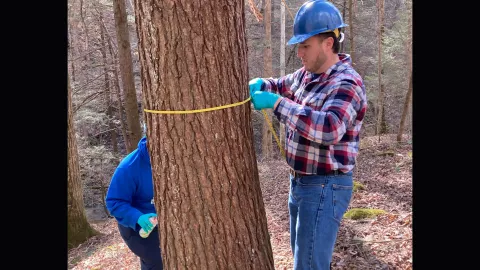
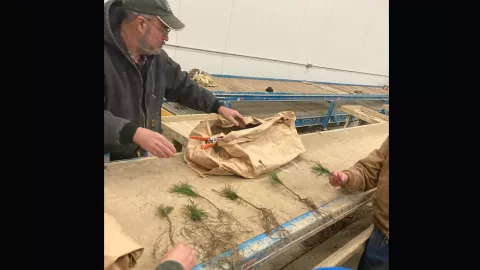
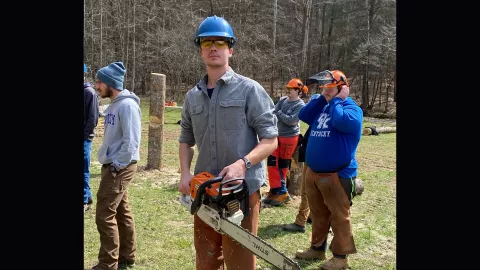
Week 8 - Spring Field Semester 2023
by Dylan Adams
Week 8 of our spring field semester was located at UK’s Robinson Forest and the Wood Utilization Center. The course, Forest Operations and Utilization, was taught by Chad Niman and Dr. Jim Ringe. Activities of this week involved tree grading (with the assistance of John Reinstetle), log grading, sawing of timber and timber products, and the assembly of tables made by students with the assistance of course instructors and Wood Utilization Center staff. This week’s activities taught us forestry skills that are important for future careers, such as lumber grading for the lumber industry's sawmill and other equipment training. The Wood Utilization Center showed us the processes of manufacturing products, how to operate machinery, how to calculate necessary materials, labor, cost, and equipment needed in the creation of the tables, and how more materials are needed to account for the loss of board footage through the process. The skills and activities of this week are important for our future careers as professionals by providing a basic understanding of the skill sets we may need going into the industrial and forest management sides of the forestry profession.

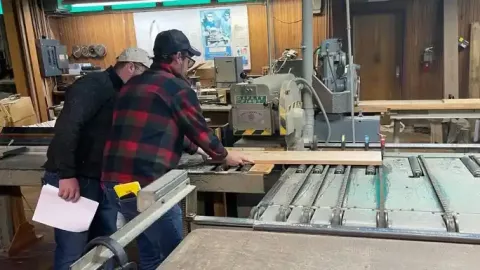
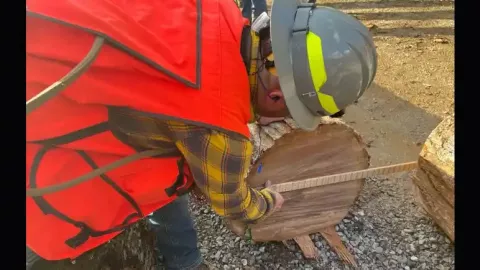
Week 7 - Spring Field Semester 2023
by Chase Lawson
This week we had Dr. Jacob Muller for forest Inventory and Measurements. Our classes were held at Robinson Forest and we learned how to implement a timber inventory (timber cruise). Learning the steps of a timber cruise is crucial because you need to understand what trees are in the area you are managing. It is important to learn the statistics because when working on large parcels of land it would take too much time to count each individual tree. As forestry professionals, we need to know how to collect and interpret data to make informed decisions on next steps. Collecting inventory data is an important part of any natural resource job.
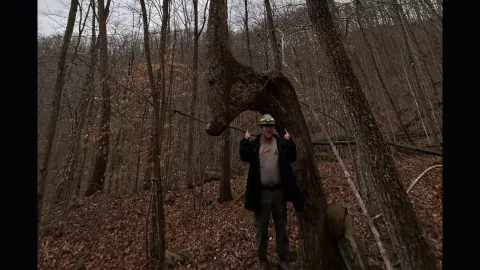
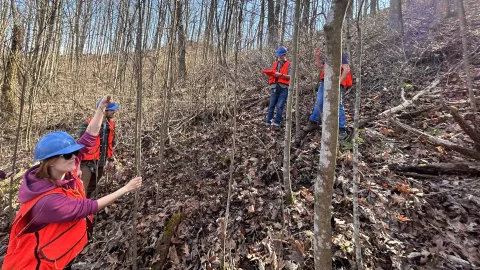
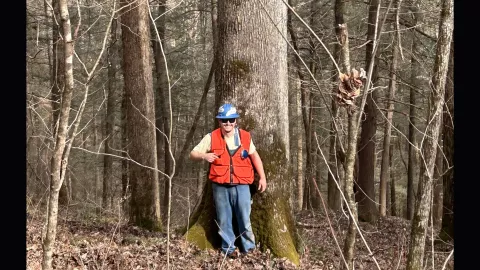
Week 6 - Spring Field Semester 2023
by Bryce Siegle
This week Dr. John Lhotka was our instructor for silviculture. This was the first week at Robinson Forest. We started the week looking at different clearcut sites and how they look in the landscape several years after doing this prescription method. We spent the entire week in the field going over silviculture procedures. I found this week to be particularly helpful because we implemented the skills we learned in the classroom and applied it to the field. Writing the silviculture prescription sheets were extremely helpful as we gained more knowledge about it. These activities are important to learn in forestry because it helps explain how to maintain a forest stand and what needs to be done to meet the objectives of a landowner.
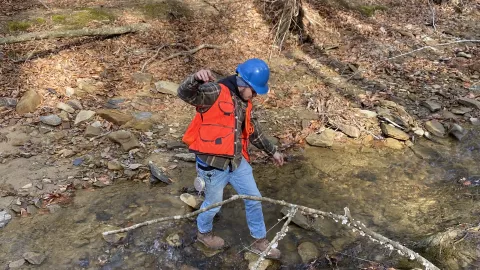
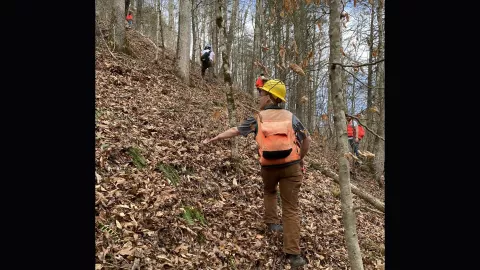
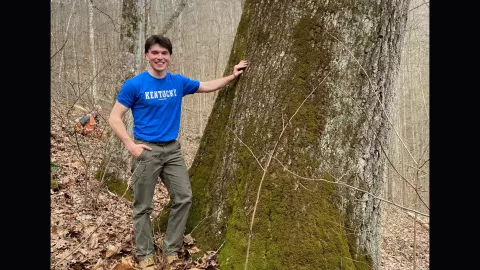
Week 5 - Spring Field Semester 2023
by Nick Harpe
The 2023 spring field semester feels like it just started yesterday, but we already have five weeks in the books! At Berea College Forest on Monday, February 6, Dr. John Lhotka began teaching us how to apply oak regeneration methods we previously learned about in his FOR 350 Silviculture class. Everyone seemed to pay especially close attention to these lessons since oak silviculture is so critical in our region. We practiced marking a shelterwood treatment, observed the results of applying prescribed fire to an oak stand, and took field data for our first oak regeneration prescription exercise. We spent Tuesday in Project Learning Tree training at Raven Run Nature Sanctuary with Doug McLaren and Laurie Thomas, who demonstrated effective methods for teaching natural resources concepts to young people. These skills will undoubtedly be beneficial, as many of us will speak with young community members as part of our future professional duties. We spent Wednesday in the Daniel Boone National Forest with Jake Royce, a USFS Silviculturist for the DBNF London Ranger District. Jake showed us several interesting sites, including oak shelterwood treatments, oak woodlands maintained by prescribed fire, shortleaf pine stands, and a white pine plantation from the 1960s that is slated for conversion back into a mixed oak forest. Returning to Berea College Forest with Dr. Lhotka on Thursday, we collected more field data for two more oak regeneration prescriptions. Unfortunately, our day was cut short by 55-mph wind gusts that created unsafe conditions for us to remain in the forest. We wrapped up the week on Friday with a hike near Berea to discuss site-species relationships. We learned how to combine those relationships with topography to delineate forest stands for silvicultural treatments. We then had the opportunity to practice applying those concepts by delineating stands in another area. After a fun and informative five days, we’re all excited to head into week 6, which will be our first week at Robinson Forest!
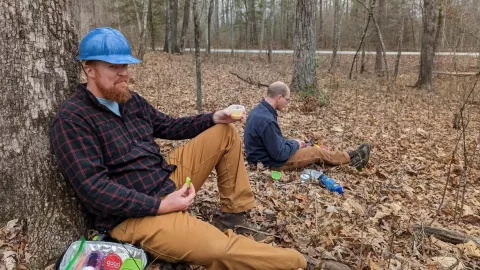
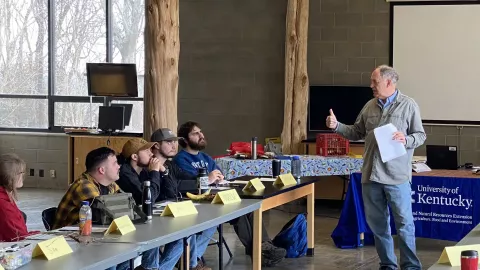
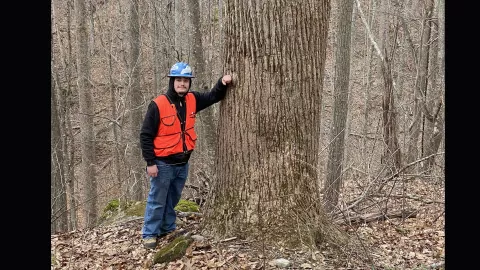
Week 4 - Spring Field Semester 2023
By Kate Donnally and Nathan Pennington
This week was the first week of our silvicultural practices course and took place at the Berea College Forest with Dr. John Lhotka. On Monday, we talked about even-aged regeneration methods, stand replacement disturbances, and strategies for early stand management along with practicing writing silvicultural prescriptions. On Tuesday, we stayed in Lexington to participate in the American Tree Farm Inspector training. Through this training, we learned about the guidelines for the American Tree Farm program and how to fill out inspection forms for participating landowners. The rest of the week, we were in Berea. On Wednesday, we practiced using our compass and measuring tape to map out the boundary for a half-acre rectangular plot. On Thursday, we learned about site-species relationships and participated in assignments that deal with thinning and regeneration of mesic hardwood sites and early stand management. On Friday, we talked about upland oak ecology along with degraded stand management. It is important to keep going over and practicing these concepts and skills in order to be a better forester. The principles and skills we learned this week give us a good foundation to work off of in our future careers.
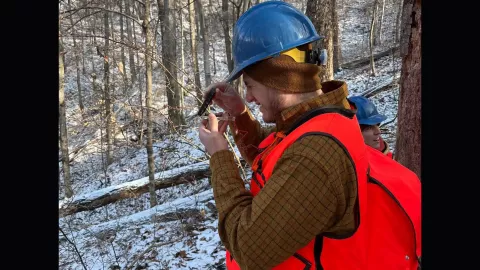
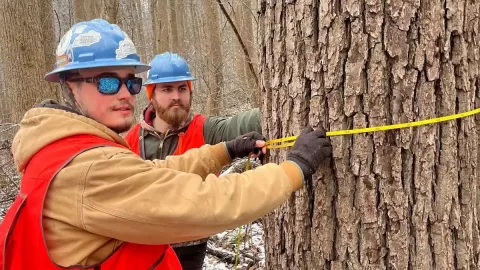
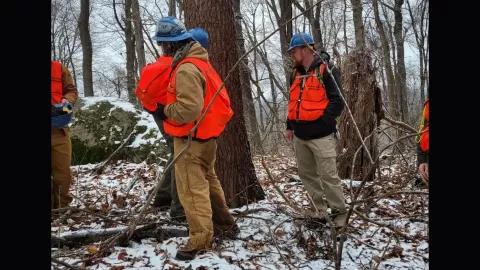
Week 3 - Spring Field Semester 2023
by Courtney Vice
Week three was busy for the junior forestry students. On Monday, January 23rd, we ended Dr. Crockers forest health and protection class by going to Daniel Boone National Forest. While there, we looked at hemlock wooly adelgid. We learned more about how this pest affects our tree species, alongside professional foresters. For the rest of the week, it was about industry tours and making connections at the KTSAF meeting in Bowling Green, KY. Beginning on Tuesday, January 24th, we headed to the start of our industry tours and our first stop was Patterson Chip Company in Corbin, KY. Here they produced mostly mulch and wood chips. We experienced our first lumber yard and how some of the heavy equipment was operated. After visiting with this industry, we headed to grab a quick lunch then off to BPM Lumber in London, KY. Here, we were able to watch the full process of a log being tuned into lumber. It was a very cool experience to see how much mechanical equipment it takes to complete the process. The next industry that we visited was Robinson Stave/East Bernstadt Cooperate in East Bernstadt, KY. This industry was probably my favorite. We were able to see how bourbon barrels were made from start to finish. Considering that we are known as the bourbon state, it was neat to see the hard work that is put into producing the best bourbon possible. On Wednesday, January 25th, we started the day by going to Cox Interiors in Campbellsville, KY. The main products produced here are wood accents for home interior. The last industry that we visited was Quantex, formally known as Woodcraft Industries. This industry mostly produced cabinets and had a multitude of other products that they sold. It was nice to see how different each industry ran their business, as well as the multitude of things that they produced to meet their customer base. To end the week, we stayed in Bowling Green, KY to attend the KTSAF (Kentucky-Tennessee Society of American Foresters) meetings on Thursday, January 26th, and Friday, January 27th. While here, we listened to several speakers from all different professional fields, in the realm of forestry, and gained insight as to how we can get our careers started. We also participated in a quiz bowl against University of TN and Shawnee and enjoyed dinner and a live band. This concluded week three in the field semester.

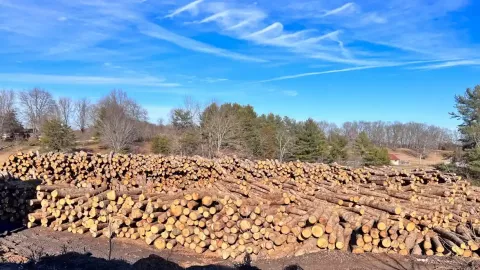
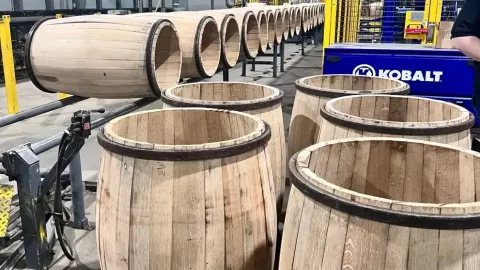
Week 2 - Spring Field Semester 2023
by Kassidy Everidge
The second week of our spring field semester takes place in Lexington, with Dr. Ellen Crocker for Intro to Forest Health. Our first day began with a discussion on what the term forest health actually involves and the current conditions of our forests. In the afternoon we drove to Floracliff Nature Sanctuary to do a forest health assessment as well as get some hands-on experience with invasive plant removal. We assisted Floracliff’s workers and volunteers with removing bush honeysuckle in an area of their forest. For the second day, we pick back up learning about forest health conditions. We spent the day learning about plant pathology. We met with Dr. Tyler Dreaden and Megan Buland for a lab where we studied different pathogens, fungi, and petri dishes of spore growth’s we collected the week before under microscopes. That evening we went to the TPC computer lab to begin working on projects about a chosen tree disease. On day three we learned more about pathogens and mycology. Megan Buland spoke with us about how mushrooms are grown for marker production and we had the opportunity to begin growing our own batch of oyster mushrooms that we got to take home with us. That evening we finished up our research for our disease projects. Day four consisted of elaborating on invasive plant management and presenting our disease projects. We hung posterboards of our projects in the hallway and presented them to both classmates and a group of professionals who work with extension and the public. Lastly, we had a review session to go over what we had learned throughout the week.
The activities of this week were important to our future careers, as all of us will have to deal with invasive species and communicating with people outside the forestry field in our work.
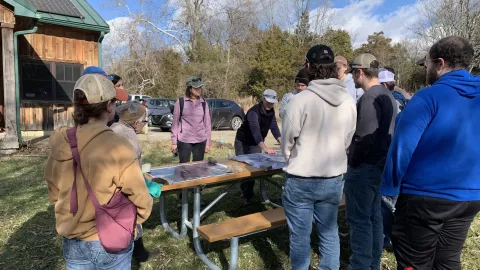

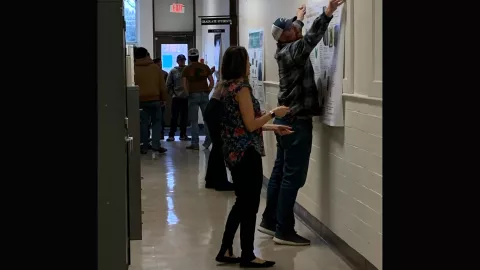
Week 1 - Spring Field Semester 2023
by Tucker Brown
Our first week of the semester we did a team bonding event and field skills refresher course. The team bonding event was at the Asbury University Challenge Course and it included multiple games, puzzles, and challenges that promoted teamwork and comradery. We also completed a high rope and low rope challenge course. Some of these walkable wires were 40 feet off the ground! The rest of the week was a skills refresher course to remind students how to do different types of fieldwork like measurements and compass directional work. This was taught by multiple professors at the Thomas Poe Copper building on campus. We also spent a day at the Berea College Forest touching up on some lessons taught in previous semesters. This week was fun and a great way to start such a unique semester.
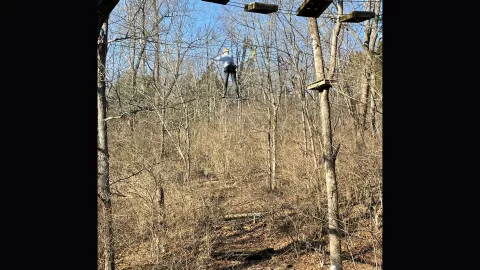
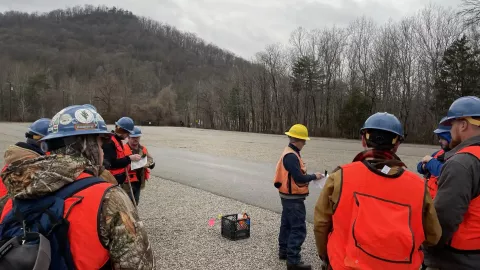
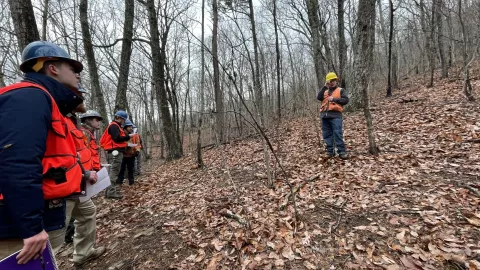
Questions?
For questions or additional information on the undergraduate forestry program, contact Laura Robinson, Forestry Academic Coordinator at 859-257-8718 or L.Robinson@uky.edu. Also, email Laura if you would like to arrange an in-person visit or a Zoom meeting. Let us know how we can help!
Email Laura Robinson